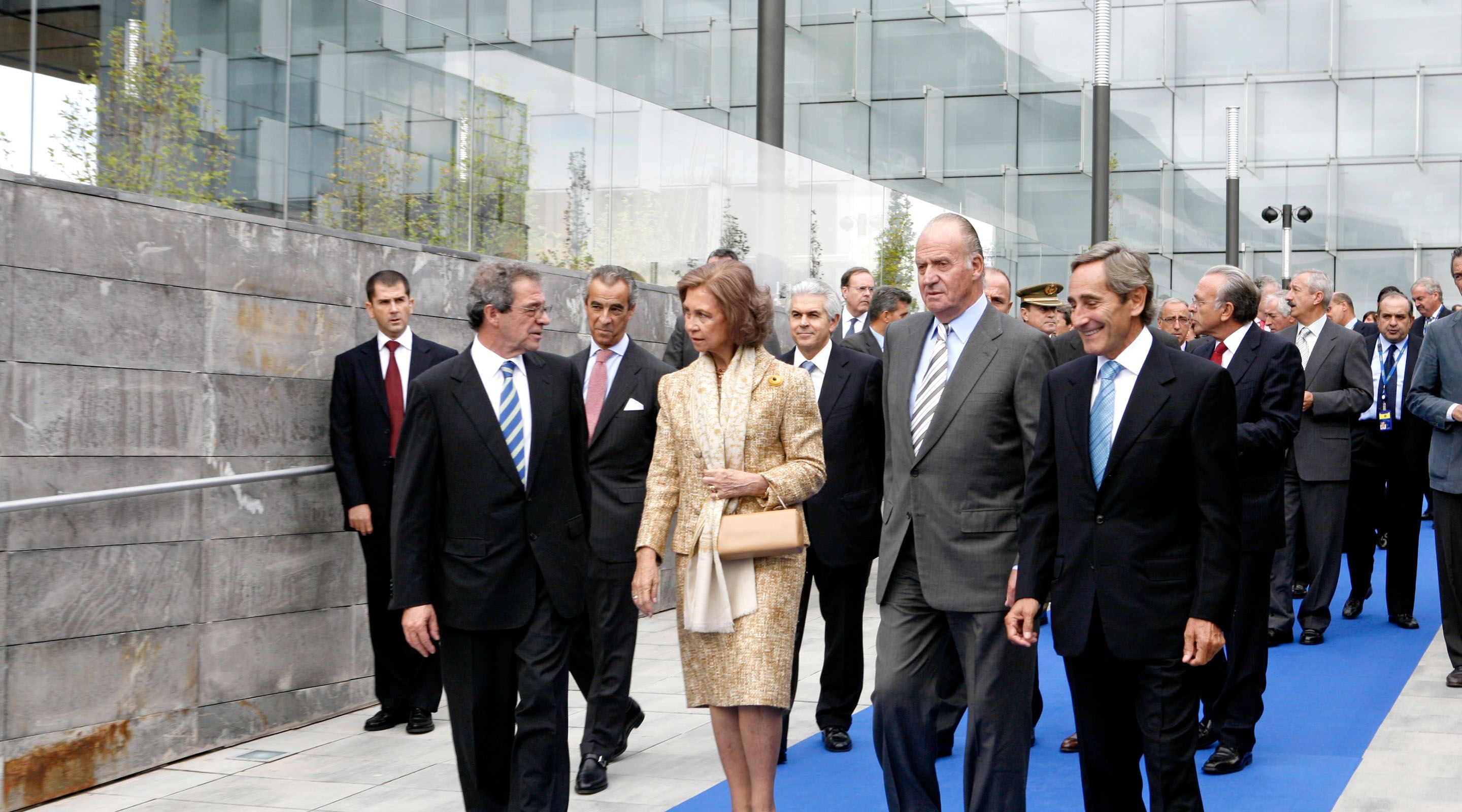
2008
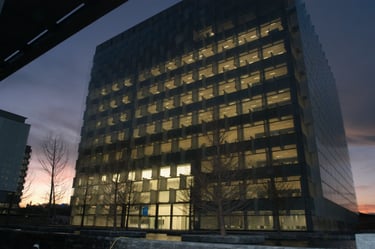
Telefónica's new headquarters are inaugurated in Las Tablas: a large complex to house 12,000 employees, in 15 glass-fronted buildings, surrounded by green areas. It meant a new way of working in an open, paperless, cross-cutting space...
Moving house: new headquarters for Telefónica
01
In 2008 we celebrated the opening party of our new headquarters in Madrid in style. The King and Queen of Spain toured Telefónica's new facilities in the Las Tablas district and took part in a large meeting with personalities from all walks of life: social, political and business. Opening the doors to District C, Communications District, as it was originally called, was a source of pride for us. On a large plot of 168,000 m2, the work of the architect Rafael de la Hoz stood imposingly. A transparent complex of 15 glass-fronted buildings in a large space full of green and sustainable areas. Very sustainable, in fact, then, the largest covered solar park in Europe and one of the largest in the world: 16,000 photovoltaic solar panels that generate 10% of the complex's annual consumption. The Telefónica District campus (the current name, which was changed in 2011), with its open offices and innovation centres, training areas and all kinds of services, was not just a change of location, but a radical change in the way of working, without paper, more horizontal, transversal, flexible, an open space that invites people to meet and collaborate.
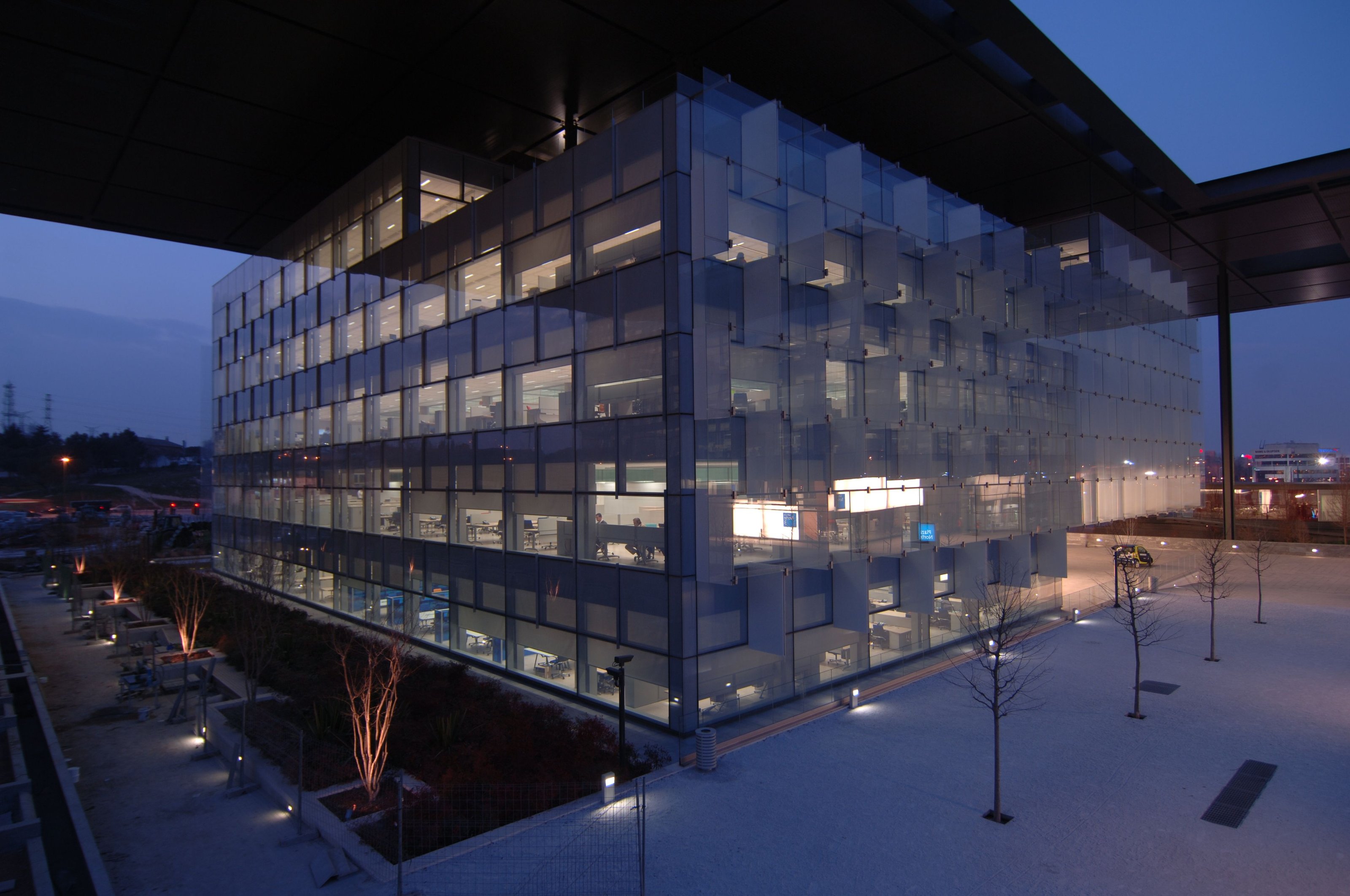
The transformation of Gran Vía 28
02
The relocation of employees to Distrito Telefónica freed up a lot of space in Gran Vía 28, the company's headquarters until then. It is time for a big change and the ground and first floors are converted into a large shopping and cultural centre. Telefónica's flagship shop is born, with 3,000 m2 dedicated to new technologies and to offering the best experiences to users. On Friday, 11 July 2008, the shop opened to the public at 10:00 a.m. to coincide with the sale, for the first time in Spain, of the iPhone 3G (sole distributors in Spain). The queues, which had begun the previous evening, seemed endless, and stretched along Gran Vía all the way to Plaza de España. Madness.
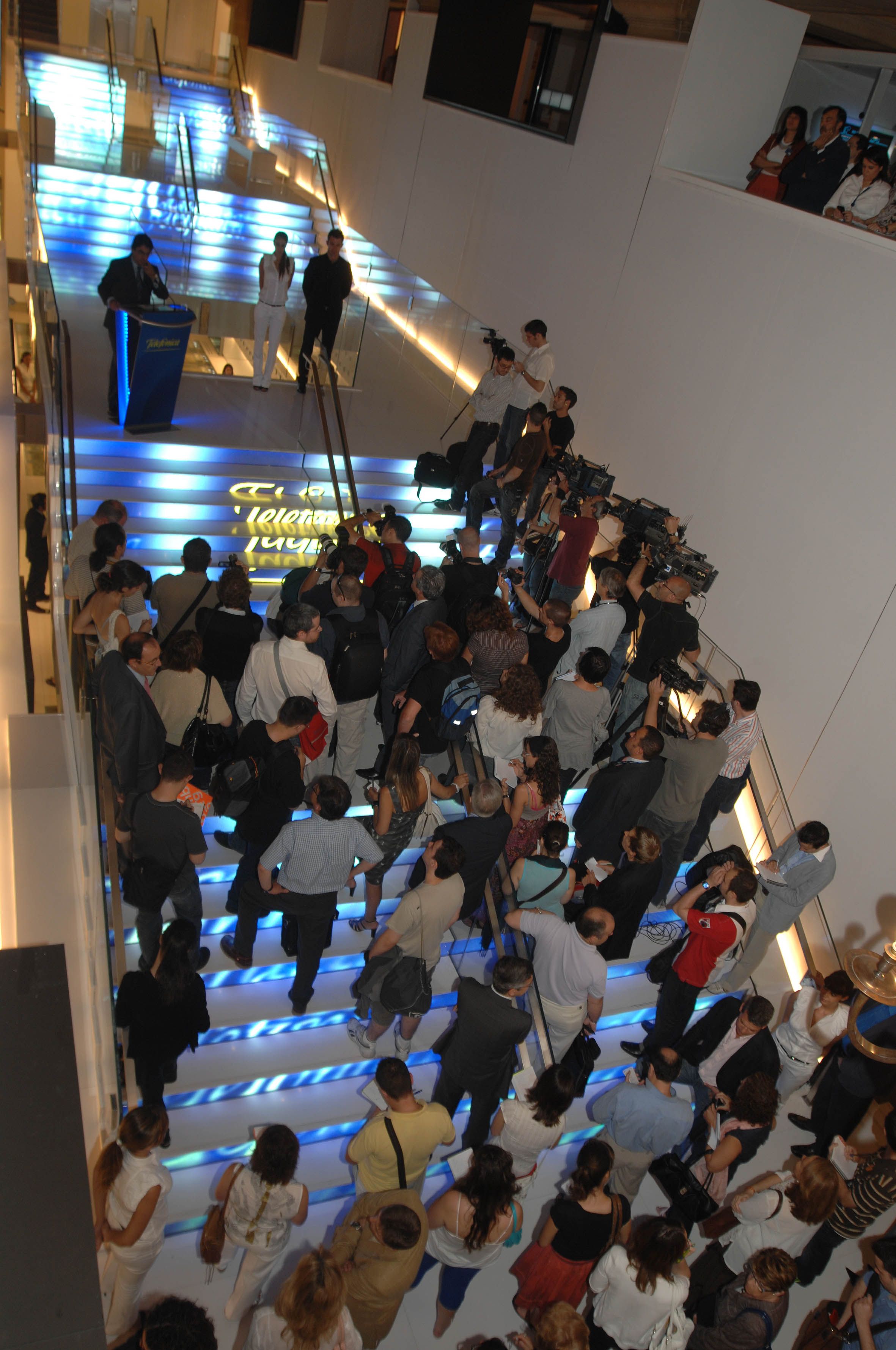
We create the Climate Change Office
03
In the summer of 2008, Telefónica announces the creation of a Climate Change Office to ensure the reduction of greenhouse gas emissions from the company's activities, as well as positioning the information technology sector at the centre of the solution to climate change. And associated with this Office, Telefónica is promoting the Climate Change Plan, a cross-cutting Group project that involves all countries and management areas, based on different pillars such as the adoption of preventive measures in terms of energy saving and efficiency and the promotion of the use of telecommunications services as part of the solution to Climate Change.
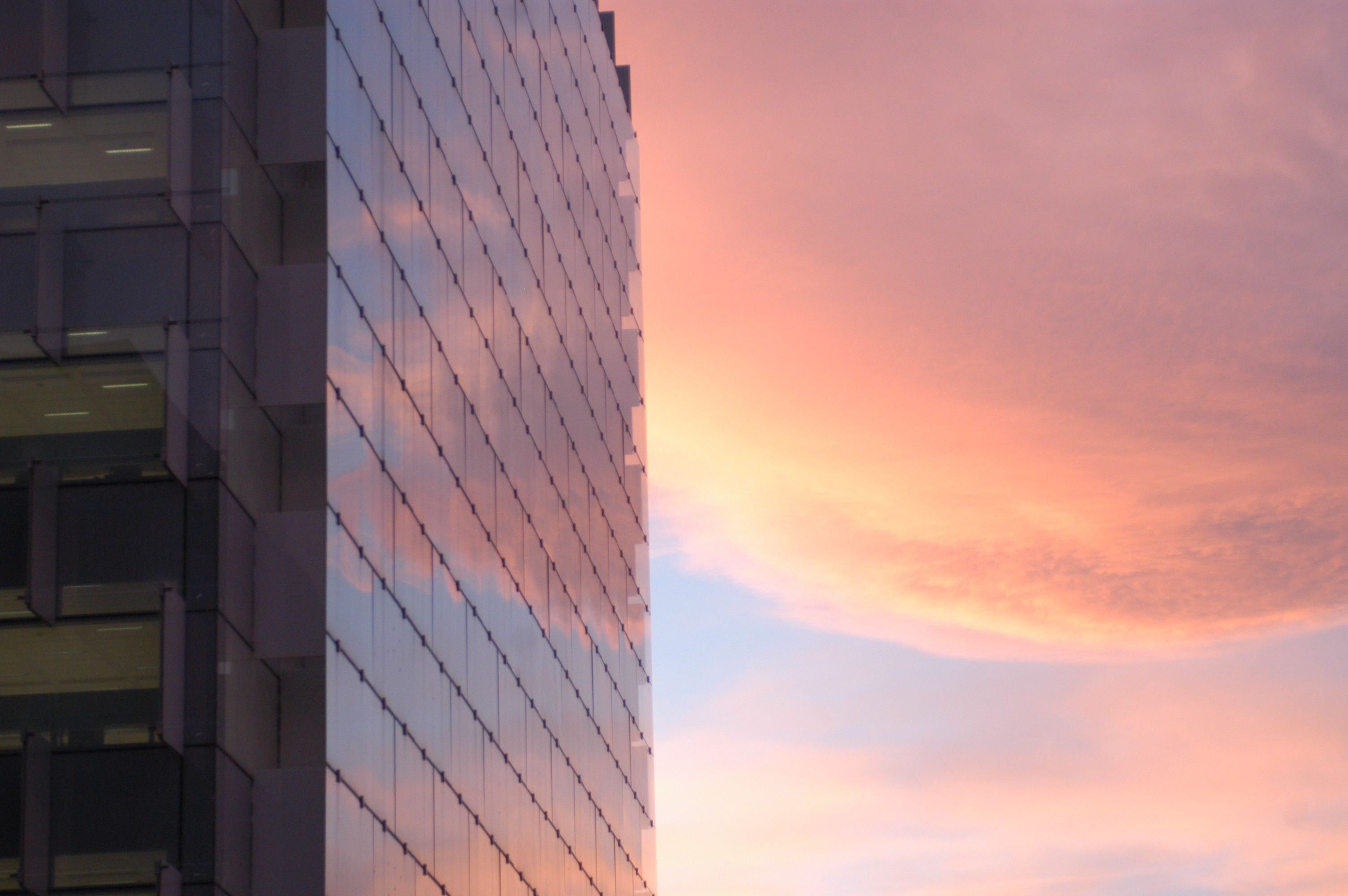
Proniño: We exceede 100,000 direct beneficiaries
04
Telefónica's main social action project in 2008 was Proniño. Managed by Fundación Telefónica, together with our local operators in Latin America, its focus was to eradicate child labour through quality schooling. We set out to reach 100,000 direct beneficiaries that year and we did it. On 31 December, Proniño reached 107,602 children and adolescents in 13 Latin American countries. This focus on children's education has not changed. It is currently channelled through the ProFuturo programme, which was created in 2016, promoted by Fundación Telefónica together with the "la Caixa" Foundation. Its aim is to reduce the global education gap by providing quality digital education to children living in vulnerable environments in Latin America, the Caribbean, Africa and Asia.
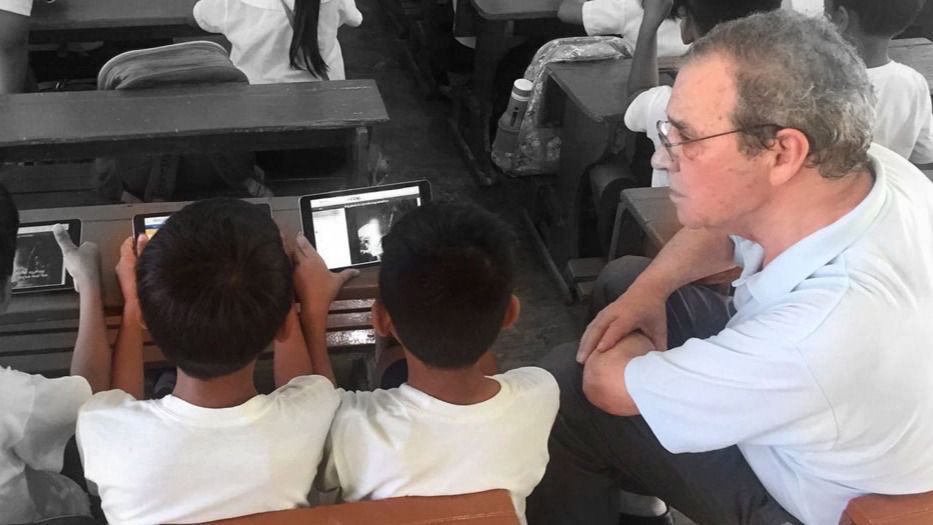
Do you have doubts about what happened?
Ask Aura